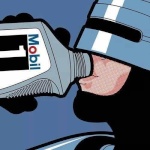F190 Round 11 - 12/3/15
OZFM :: F190 Series
Page 1 of 1
 F190 Round 11 - 12/3/15
F190 Round 11 - 12/3/15
F190
Round 11
Sebring International Raceway
-Thursday 12/3/15 9pm nsw time
Qualifying session - minsRound 11
Sebring International Raceway
-Thursday 12/3/15 9pm nsw time
Race 1 - laps - Q Grid - no safety cars
Race 2 - laps - reverse race 1 results grid - safety cars until the start of lap .
-History
Sebring started life as a United States Army Air Forces training base. From 1941 to 1946, pilots learned to fly the B-17 Flying Fortress. This lineage was commemorated by a special livery on Gunnar Racing's Panoz in the 2002 12 Hours of Sebring resembling a World War II-era B-17.
After the war, aeronautical engineer Alec Ulmann, seeking sites to restore military aircraft for civilian use, saw potential in Hendricks' runways to stage a sports car endurance race, similar to the 24 Hours of Le Mans. Sebring's first race was held on New Year's Eve of 1950. The Sam Collier 6 Hour Memorial race was won by Fritz Koster and Ralph Deshon in a Crosley Hot Shot that had been driven to the track by Victor Sharpe. This first race attracted thirty racecars from across North America.
The first 12 Hours of Sebring was held on March 15, 1952, and the event would grow to become a major international race. In 1959, the racetrack hosted the first Formula One Grand Prix in the United States. Due to the poor attendance and high costs, the next United States Grand Prix was held at Riverside.
For much of Sebring's history, the track followed a 5.2 miles (8.4 km) layout. In 1967, the Webster Turn between the hairpin and the top of the track was removed and replaced with the faster Green Park Chicane, which was closer to the hairpin and allowed a flat-out run through a very fast corner to the top of the track and the runway; this made the circuit 50 yards longer. The circuit was also widened. Many of these changes were prompted by the 1966 12 Hours where 5 people were killed during the race. Another dangerous section was the Warehouse straight; after a crash where a Porsche went into one of the warehouses and into a crowd, the organizers installed a chicane to move the Warehouse straight further away from the warehouses and buildings. In 1983, the track was changed to allow simultaneous use of the track and one of the runways. In 1987, more changes allowed use of another runway. Further changes in 1991 accommodated expansion of the airport's facilities, and brought the track close to its current configuration. The entire track could now be used without interfering with normal airport operations. In 1997, the hairpin was removed due to a lack of run-off, and replaced with what became known as the "safety pin". Gendebien Bend was also re-profiled to slow the cars' entry to the Ullman straight.
The track is currently leased by the Panoz Motor Sports Group, who acquired the facility from Andy Evans in 1997.
The track is currently owned by NASCAR via its purchase of the Panoz MSG in September of 2012
The track is often recognized for its famous, high-speed "Turn 17", a long, bumpy, fast right hander that can make or break a car's speed down the front straight. The corner can fit up to 3 cars wide.
Skip Barber Racing School holds numerous programs at the facility, including a Scholarship opportunity for young racers.
Track map.
Sebring International Raceway consist of three tracks: the Full Circuit, the Short Circuit, and the Club Circuit. The course of the track itself is 3.74 miles (6.02 km) long. It is a seventeen-turn road course with long straights, several high-speed corners, and very technical slower corners. Many of the turns and points along the track are named for the early teams and drivers. There is very little elevation change around the track and little camber on the surface, providing a challenging track for drivers, especially when it rains.
Sebring is renowned for its rough surface. The course still runs on old sections of World War II-era landing fields that were constructed of concrete sections with large seams. The transitions between sections are quite rough and often, sparks fly from the undercarriages of the cars as they traverse them. Much of the track has intentionally been left with its original concrete runway surface. The track surface has 3.04 miles (4.89 km) of asphalt and 0.7 miles (1.1 km) of concrete. Mario Andretti, a 3-time 12 Hours winner, said that one of the hardest parts about the original Sebring track was "finding the track to begin with." There had been many accounts of drivers retiring due to accidents at night, quite simply because they got lost on the runway sections and couldn't find the track again. Some drivers got lost even during the day, mostly because the track was poorly marked down with white lines and cones.

XYvSTUvYX- OZFM Legend & Hall of Famer
- Posts : 3093
Points : 4023
Age : 35
Join date : 2010-03-03
Location : Newcastle NSW
 Similar topics
Similar topics» F190 Round 9 - 26/2/15
» F190 Round 2 - 8/1/15
» F190 Round 8 - 19/2/15
» F190 Round 6 - 5/2/15
» F190 Round 3 - 15/1/15
» F190 Round 2 - 8/1/15
» F190 Round 8 - 19/2/15
» F190 Round 6 - 5/2/15
» F190 Round 3 - 15/1/15
OZFM :: F190 Series
Page 1 of 1
Permissions in this forum:
You cannot reply to topics in this forum



 by
by 

